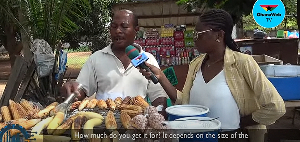The wise roadside poet it was who once said, “coming events cast their shadows”. In this particular case, I agree. I speak of the second wave of the SARS-COV-2 virus infection, aka COVID-19 disease.
Unlike the second coming of Christ, the second coming of COVID-19 is a clearly announced event with date, time and venue – okay maybe not so dramatic but I think we can safely tag it with the “in the very near future” phrase.
Before you label me a prophet of doom, just hear me out first.
In a deterministic universe such as ours, predictions of future events - natural disasters, wars, day, night and so on – rely almost solely on trends- and pattern recognition; so does the science of Public Health.
If you and I agree on my premise, then let us trace the trends and patterns of COVID-19 since it first rolled into town.
What has now become known as the first wave of COVID-19 touched down initially in Asia before meandering its way via a sinusoidal journey through the Middle East, Europe, North America, South America, with a brief detour through Africa where South Africa might still be licking its wounds. As to why Africa recorded low numbers remains a matter of great curiosity. Several reasons could account for this “why”, namely, under-diagnosis, under-reporting plus/minus other measurement biases. Nevertheless, we felt the pain in terms of the many prominent lives lost to COVID-19.
That is a discussion to be had on a better day.
For now, it is instructive to note that during the early days of the first wave, countries that “overreacted” by implementing “melodramatic” strategies like compulsory “lockdowns” including rigid quarantine, isolation and airport closures along with mandatory masking, practically halted the virus in its tracks even before it took off – New Zealand, Taiwan, South Korea and Germany readily come to mind. Early epicentres such as China, Spain, Italy, France and England efficiently picked up the lessons after being overrun and swiftly brought the chaos under control without reinventing any part of the wheel.
The EU as a whole followed Germany’s example and about 2 months later, had brought its epidemic under control but not before the Prime Minister of Great Britain almost did not survive a trip to the Intensive Care Unit.
South Korea, Australia and China have had “minor” outbreaks after the first wave, but prompt and uncompromising strategies of lockdown-quarantine-isolation-masking ensured swift control in each of these countries.
China tested a whole city of over 11 million people just to signal the scale of overzealous determination required to face the virus. Australia, New Zealand and temperate Southern Hemisphere even made it through their Influenza season safely without major outbreaks. The low incidence was touted as a secondary benefit of the aggressive COVID-19 Public Health measures.
Unlike its next-door neighbour Canada, the USA as a whole never gained complete control of the pandemic even though the major early epicentres of New York City, Boston, Seattle and Los Angeles did achieve complete control.
However, just as the world – minus the USA – heaved that collective sigh of “close call” relief and began getting its groove back – nervously reopening schools, airports, restaurants and holiday destinations – the somewhat expected second wave of the epidemic began to raise its crest in Europe.
The USA, as if in lock-step, has followed Europe with an even more dramatic surge both in numbers of new infections and deaths.
I am not by any means saying with any degree of certainty that a second COVID-19 wave is upon Africa (o), after all, it is entirely possible that lightning will strike twice in a row and COVID-19 will bypass us again – stranger things have happened.
The risk though is not insignificant as our Kotoka Airport has been opened and seen daily flights from Europe. Using 14 days as the incubation period for the virus, the current wave in Europe began at least 14 days ago and therefore may have been exported into Ghana (Africa) already.
Epidemiological studies have shown that the first New York City cases may have been exported from Europe (not China). Our current election campaigning season and ongoing demonstrations in Nigeria are just two of the potentially catastrophic “super-spreader” events facing Ghana. All I am saying is that like our wise forefathers advised, if your neighbor’s beard is on fire, do not just go sit by water, go ahead and preemptively immerse your entire beard in the river!
Over one hundred years ago, the necessity of an aggressive Public Health approach as the only tried and tested strategy to combat a pandemic-generating disease such as COVID-19 (without vaccine nor effective treatment), was clearly demonstrated during the 1918 influenza pandemic in two USA cities – Philadelphia and St. Louis - by Hatchett et al. The response between Philadelphia and St. Louis made a great case that social distancing does work. In Philadelphia, the first case was reported on September 17 and authorities downplayed the significance of the case.
They even allowed a city-wide parade to happen on September 28. School closures and bans on public gatherings did not happen until October 3, 16 days since the first case. Meanwhile, St. Louis had its first case on October 5 and the city implemented social distancing measures two days later. What was the effect?
The 14-day difference in response time between the two cities represents approximately 3-5 doubling times for the epidemic. The peak weekly death rate from pneumonia and influenza-related deaths was 257/100,000 people in Philadelphia. The same metric in St. Louis was 31/100,000 (Hatchett et al., 2007. PNAS.).
The 1918 influenza study highlights relevant Public Health lessons that could be applied to COVID-19, 102 years on:
At the population level,
• The results stress that action from public health officials need to happen sooner rather than later
• Communities that implement more interventions proactively have better outcomes that communities that introduce interventions reactively
• In cases of severe pandemics, cities should maintain interventions longer than 2-8 weeks (the norm in 1918)
When implemented in a thoughtful deliberate manner, this population level strategy has the advantage of being a “big picture” template that could then be modified for various public settings as appropriate – schools, churches, hospitals, sporting events and so on – without the need for separate situation-specific planning. Logistics and resources can then be diverted to the maintenance of essential services and workers.
At the Individual Level:
The requirements represent an extension of the “Do unto others as you would have them do unto you” principle – wearing the appropriate mask in public and around people outside your “nuclear bubble”, quarantining if exposed, isolating if infected and of course, hand hygiene.
In conclusion, we are faced with a potentially deadly second wave of COVID-19. Ultimately, we are not going to argue, cure or vaccinate our way of this. In the end, only the uncompromising application of tried and tested scientific principles could save us. Our options? – bury our heads in the sand (USA) OR bite down and embrace inevitable painful decisions.
Opinions of Sunday, 25 October 2020
Columnist: Dr Paul C Adjei



















